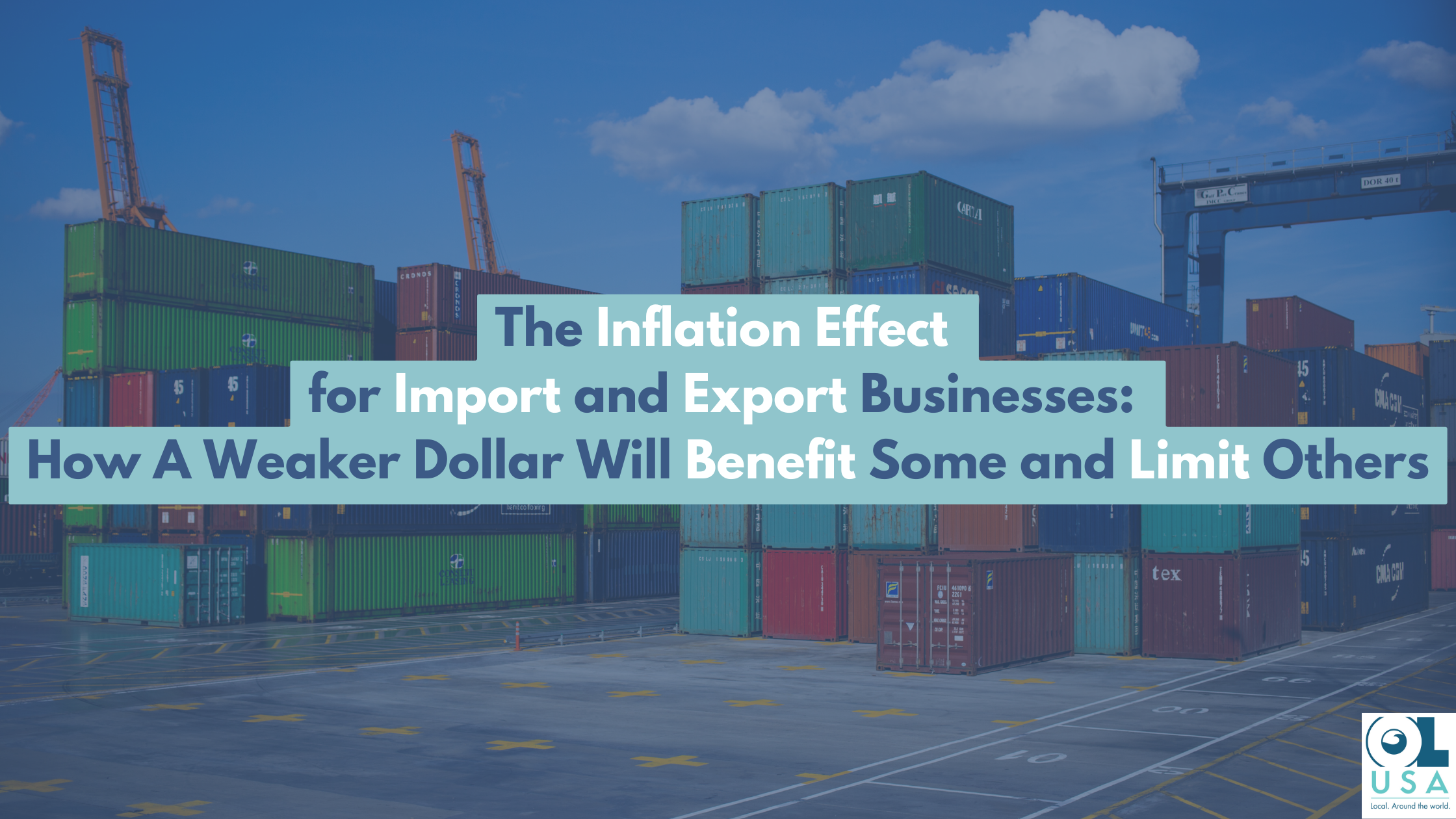Inflation is par for the economic course—but, coming out of the pandemic, the accelerated rate of inflation hit the shipping and logistics industry hard. Not ideal considering the two-plus years of slowdowns, shortages, and other massive hits we’d just navigated.
While inflation has, thankfully, slowed a bit over the last few weeks and months, all signs still point to a weaker dollar by the end of 2023. But it’s not all bad news. Yes, a weaker dollar threatens the profitability of stateside imports—but exports directly benefit. With the dollar declining, we’ll no doubt see global organizations looking to leverage a suddenly-favorable exchange rate.
But what about small businesses operating on thinner margins? A weaker dollar artificially inflates the cost of moving cargo. Accounting only for fuel, even—excluding payroll, food, and other expenses—we can expect shipping costs to be impacted. And while it’s possible to mitigate some of these challenges, it’s even better for SMBs to build out partner relationships—ideally with partners like OL-USA who can tap into massive global networks, keeping costs in-check.
How a weaker dollar impacts imports and exports
Taking a step back, it’s easy to see the impact of inflation—and a weakened dollar—on the entire supply chain. A weaker dollar can significantly impact household spending, particularly in key retail segments, including luxury goods and other more discretionary categories. As consumer spending stalls, these businesses may be more apt to pause on hiring, curb raises and bonuses, or delay other organizational investments—think in-store updates or associate training. The longer spending slows, the more likely companies are to consider cost-cutting measures, and even layoffs, which impact unemployment and can slow economic growth even more.
From this perspective, it’s easy to see the trickle down: consumers spend less, demand shrinks, and every player in the global supply chain takes a hit, from manufacturers producing less to logistics teams dealing with decreased retail cargo. And if there are significant layoffs and a growth in joblessness? Those declines can quickly move beyond luxury and discretionary retail and into everyday needs and purchases, impacting the supply chain even more.
Export versus import challenges—and upside
All of this said, a weak dollar tends to have a more significant impact on importers—and, in many cases, can be a win for global exporters. Heightened inflation typically syncs with the exploitation of natural resources—and is often associated with reduced exports and slower growth. Again, consider the typical inflation/supply chain trickle down: inflation rises and, with it, the cost of goods and services increases, fuel costs surge, and shipping costs skyrocket.
A weak dollar, then, makes it costlier to import international goods, driving up the cost of imported parts and products—fuel costs rise, demand dips, and shipping costs increase.
But then there’s the flip side. A weaker dollar, again, can have a direct and extremely positive impact on exporters. The more favorable exchange rate is a direct bottom-line booster. Less costly goods and services may also translate to increased production and market share, increasing profits even more. Imports, then, become the costlier option, continuing to stimulate the export market.
And when the dollar rebounds? The landscape flips with appreciation. As the exchange rate increases, the relative cost for U.S. goods and services increases, and the relative price of international goods and services drops. As a result, prices on U.S. exports decrease and imports increase.
The impact of government “course corrections”
The direct impact of inflation and a weakened dollar, though, are just part of the equation. Layer on the potential for heightened interest rates or other government reactions to these economic forces, and shipping and transport costs may spike even more—and the cycle continues.
Often, as inflation rises, governments attempt to slow things down. One common tactic? Raise interest rates. Higher interest rates make it more expensive for businesses to borrow money, which can affect their ability to invest in new projects or expand operations. This, again, can wind up stalling the economic growth even more. Less business capital can mean fewer jobs, less innovation, and a decrease in new products and services entering the market.
Governments may also implement policies that restrict imports or exports, with an eye on controlling supply and demand. While meant to support domestic growth, these policies can have unintended consequences, including lower demand and, with it, reduced consumer spending. This, then, can have significant impact on the retail and supply chain industries—and, again, the cycle continues.
Maintaining healthy margins in any climate
The reality? The global economy is an almost-constant—and supply chain leaders need to develop systems and processes for maintaining consistency and cost savings, no matter the immediate climate.
Working with a logistics provider can help organizations stay ahead of changes in the market, and respond to new challenges in real time. From optimizing carrier rates and shipping budgets to identifying potential slowdowns and strategizing workarounds, the right partner can ensure your organization has the access, efficiencies, and direct connections to keep moving forward.
Stay ahead of economic challenges—OL-USA can help. Get in touch to learn more.



